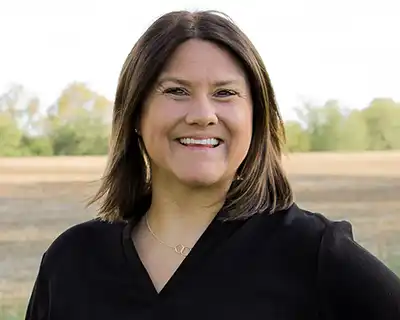AEM member Topcon discusses how today’s tools can help producers make better management decisions and quantify how good for business is also good for the environment.
Mechanization is more than red, blue, yellow, green and orange machines. The collection of components that ride along on farm equipment enable global positioning, optimize implement adjustments, provide weighing systems and other calibrating functions, and provide sensor technology to evaluate everything from soil, crop and other environmental conditions to spray nozzle efficiency. Many of these technologies are bolted on to equipment and work seamlessly to convert data into functionality that supports farm management and field operations.
Many of these components allow producers to conserve inputs, reduce fuel consumption, and create efficiencies making their operations more profitable and sustainable. The Association of Equipment Manufacturers provides insights behind how technology supports stewardship in its Environmental Benefits of Precision Agriculture report. AEM member Topcon Positioning Systems provides OEM manufacturers with hardware and software technologies that help producers make better crop management decisions.
“No one likes change, but everyone likes progress,” says Mike Gomes, Topcon’s recently named Vice President of Sustainability and Global Corporate Social Responsibility. “That’s why technology solutions need to solve for an existing need and be easy for farmers to use. And if you do both of those things well, farmers might never know they’re using your technology, which is largely the case with our NORAC boom height control systems, as an example.”
America’s Conservation Ag Movement (ACAM) caught up with Gomes to go deeper into how innovation is ushering in a new era of conservation and quantifying the economic, social and ecological benefits of modern agriculture production.

Global Corporate Responsibility, Topcon
AEM published Environmental Benefits of Precision Agriculture, which looked at various technologies that advance operational efficiency, reduce inputs and improve profitability. Why was this study important for farmers? Why was it important for consumers?
Precision Ag technologies create an immense amount of value, not just economic and not just for their owners. This report illustrates environmental benefits, as does Environmental benefits of Hay, Forage and Dairy. These technologies also create some amount of social and ergonomic benefits. When it comes to ESG’s and environmental friendliness, agriculture is one of the more positive acting industries, we just don’t tell our story enough and explain our value to the general public, who are less connected to where their food comes from, or the safe and mature supply chain it takes to serve it to them.

What kinds of technologies and mechanized innovation are driving the biggest gains in efficiency and sustainability?
Application technologies, doing more with less and precise placement, as well as the data serving as proof of placement for environmental benefits. With the increase in focus toward climate smart technologies, as well as the increase in prices for fertilizer. The idea of using organic fertilizers (like manure) can both reduce cost and improve availability of those nutrients to the crop, which means they can be more easily metabolized and are more “plant available”. The “as applied” files can serve as proof of placement, as well as telling the story of how we are doing “more with less.” Application control technologies will continue to see focus and as companies, we need to be able to help both farmers and downstream stakeholders understand how these are both good for business and good for the environment.
Where are the biggest opportunities for additional adoption? Is there low-hanging fruit that could drive efficiency for producers and make production more sustainable? Where are producers leaving money on the table?
Most farmers are already at some point on the journey toward more sustainable production. Data is just documentation of practice from in-season application of fertility, as well as looking at the 4R’s of fertilizer and thinking about right source, right rate, and right place with optimization and potential for in-season placement (right time). Those to me seem like low-hanging fruit. In addition, the ability to use data to save both time in compliance, as well as improve cost through accuracy of reporting. Each operation is at a different point, but many are striving toward some common industry goals.
How are producers capturing these productivity improvements with the data they’re gathering? How can producers meet the increasing demand to validate their production methods?
Great Question. In my thinking, it depends on where each farm is equating and delivering value with their stakeholder, both upstream and downstream. Data has a perishable value, and it isn’t easy yet. So, farms are challenged to collect the data, which has the best potential to impact operations, profit. Often these are referred to as KPIs: Key Productivity Indicators. They can vary by crop and operation, as each farm has a different methodology as to how best to create value and profit. Yield and or grain cart data as the source of truth is a great start. Planting or application data, from USDA acreage reporting to application maps, are also some solid foundational steps.
What role do equipment manufacturers and technology providers play in helping producers capture and manage the data they need to capitalize on emerging markets?
As an industry, our first responsibility to make it both meaningful and as easy as possible. Using and driving Industry standards like compatibility between the tractor and the implement via ISO 11783 or following protocols like Ag Gateway’s ADAPT are ways that we as industry members can better harmonize, like voices in a choir to make for a stronger industry and improved user.
How is Topcon specifically providing technology solutions that help producers be more productive, profitable, and sustainable? What are the latest advances in sensor technology?
We have several examples, but No. 1: Sustainability is about what you can prove and what you can get paid for. Technologies need to be implemented in operations to help with that. Making change easy to both use and implement, whether it’s application and control or documentation. With respect to Sensors, tools like sonic sensors for tillage depth, optical sensors for On-the-Go application or weighing for documentation. Or simple Telematics, to be able to document things like reductions in fuel burn, fewer trips through the field, or use of Cloud based platform to serve up report cards of how doing more with less is a reality. All of these seem to fit.
What does the exhaust data look like, and how does it plug into other infrastructure to help producers streamline reporting and sharing of production practices?
Documentation of travel or how the machine accomplishes multiple operations in a single pass, reducing both engine emissions, potential atmospheric losses from applications of fertility: All these data layers can be used to help documents and tell the story with written proof, of how many of our technologies are doing “more with less” as efficiently as possible. Reporting is challenging because everyone wants something slightly different or in their preferred data format. Farms are strong producers of data, rather than translators or manipulators of data. As an industry common standards and formats can go a long way toward streamline data useability and access..
Do you have a case study that highlights best practices in integrating technology and data acquisition, management, and reporting?
We’ve developed a dynamic dry-manure spreading system that brings precision application to what has been an imperfect science. Manure use increases organic material and replaces the need for some synthetic fertilizers, but it’s not free by any means, so producers want to know it’s being applied at the right rate just like any other fertilizer. The producers we’ve worked with have great things to say about the ROI.
There are other examples, like our precision management of feed rations in dairy production, among others, that illustrate the positive impact that sensor technology has in measuring and monitoring variable-rate operations to create a solution that can be considered a best practice for ROI, operational efficiency, plant and animal health and environmental impact. Understanding producers and solving their existing needs is essential to accelerating adoption.



